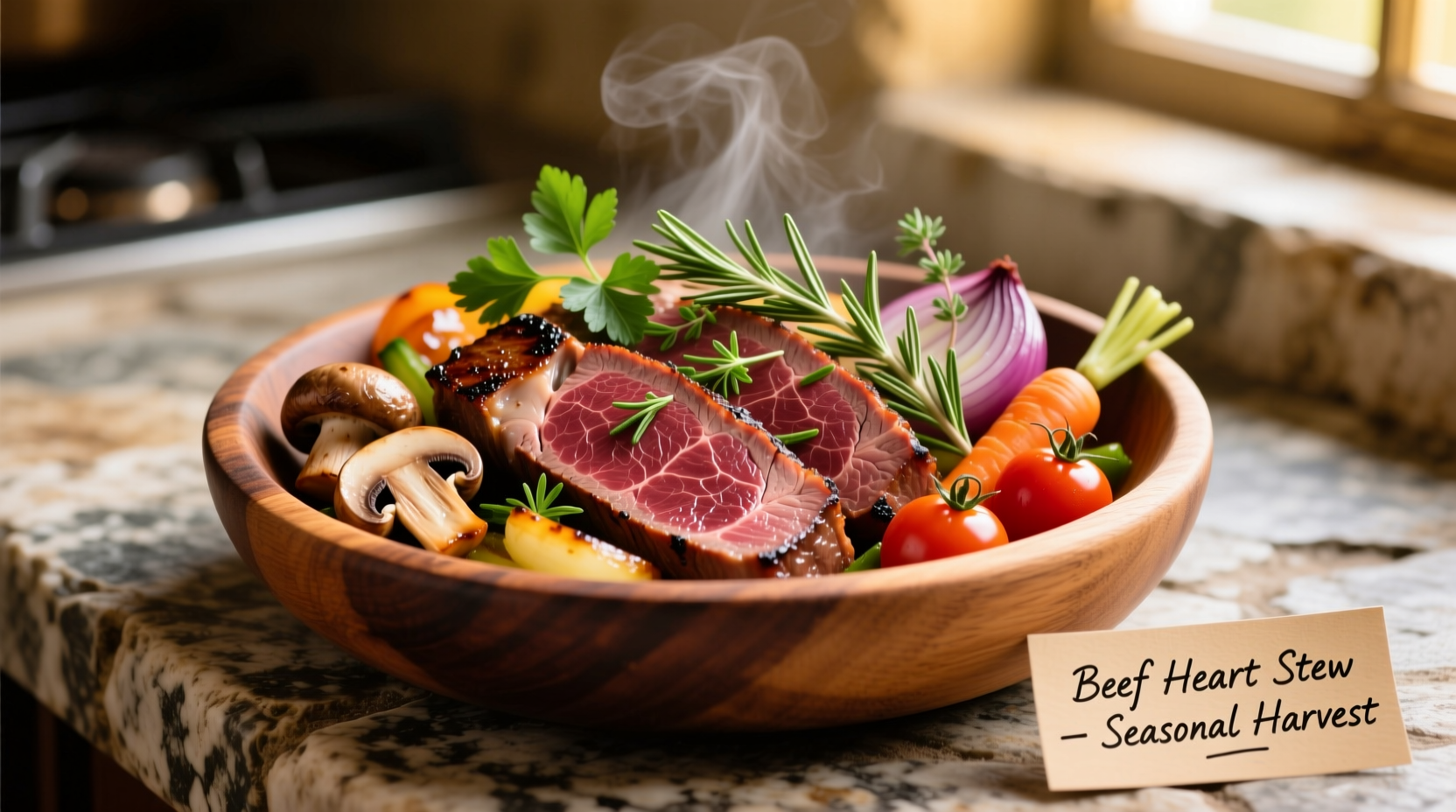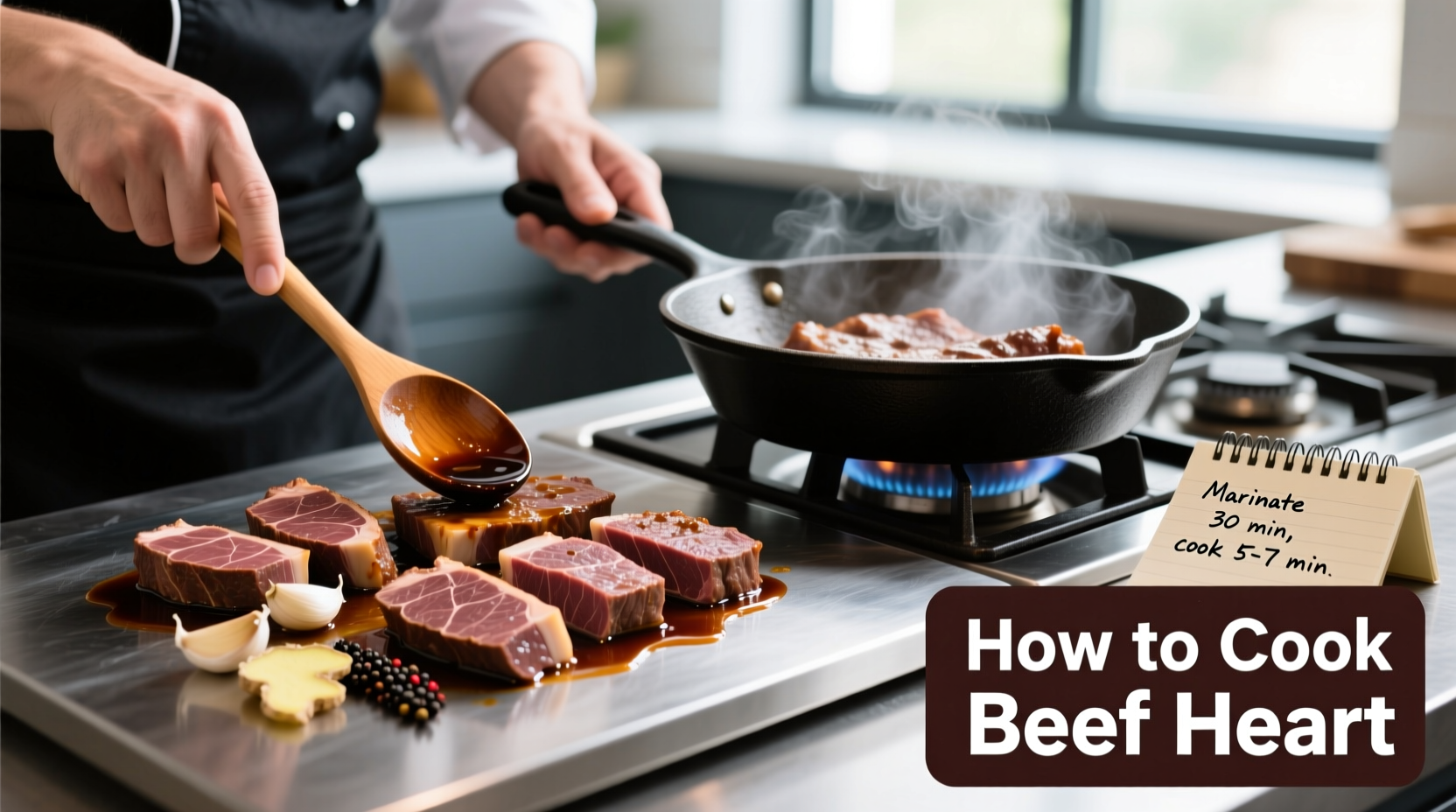If you're wondering how to cook beef heart properly, the key is slow cooking methods like braising or pressure cooking for at least 2-3 hours until fork-tender. Proper preparation involves thorough cleaning, trimming excess fat and connective tissue, and often soaking in milk or vinegar to reduce gamey flavors. When cooked correctly, beef heart transforms from tough organ meat into a surprisingly tender, nutrient-dense protein source with rich beefy flavor that absorbs seasonings exceptionally well.
Why Beef Heart Deserves a Spot in Your Kitchen
Beef heart often gets overlooked, but this affordable organ meat packs a nutritional punch while delivering rich, beefy flavor. As a working muscle, it's leaner than regular steak but requires specific preparation techniques to achieve tenderness. With proper handling and cooking methods, beef heart transforms into a surprisingly versatile ingredient that absorbs flavors beautifully.

Understanding Your Ingredient
Before you start cooking beef heart, understanding its unique properties helps you work with it effectively:
| Beef Heart Characteristics | Practical Implications |
|---|---|
| Dense muscle structure | Requires long, slow cooking to break down tough fibers |
| Lean protein (170 calories per 3oz) | Cooks faster than fattier cuts but dries out easily if overcooked |
| Naturally gamey flavor | Benefits from acid marinades and robust seasoning |
| Filled with connective tissue | Must be thoroughly cleaned and trimmed before cooking |
According to USDA Food Safety and Inspection Service guidelines, organ meats like beef heart require careful handling to prevent foodborne illness. Always keep beef heart refrigerated below 40°F (4°C) and cook to an internal temperature of 160°F (71°C) for safety.
Preparation: The Critical First Step
Proper preparation makes or breaks your beef heart cooking experience. Rushing this stage leads to tough, gamey results.
Cleaning and Trimming Process
- Rinse the heart under cold water to remove surface blood
- Cut open the heart chambers to expose interior blood vessels
- Remove all fat, silver skin, and connective tissue using a sharp boning knife
- Soak in cold water with 1/4 cup vinegar or milk for 1-2 hours to reduce gamey flavor
- Rinse again and pat completely dry before seasoning
Essential Tools for Beef Heart Preparation
- Sharp boning knife (8-10 inch)
- Sturdy cutting board (preferably plastic for easy cleaning)
- Meat mallet for tenderizing (optional but helpful)
- Instant-read thermometer for precise cooking
Cooking Methods That Deliver Tender Results
Beef heart's dense muscle structure demands specific cooking approaches. These proven methods transform tough organ meat into tender, flavorful dishes.
Slow Braising: The Most Reliable Method
Slow braising breaks down collagen into gelatin, creating fork-tender results. This method works best for larger cuts:
- Season cleaned heart generously with salt and pepper
- Sear on all sides in hot oil until deeply browned
- Transfer to Dutch oven with aromatics (onions, garlic, celery)
- Add enough liquid (broth, wine, or tomatoes) to cover 1/3 of the meat
- Cover and cook at 300°F (150°C) for 2.5-3 hours until fork-tender
Pressure Cooking: Fast and Effective
Modern pressure cookers dramatically reduce cooking time while delivering excellent results:
- Cooking time: 45-60 minutes at high pressure
- Natural release for 15 minutes before quick release
- Add 1 cup liquid minimum (broth works best)
- Season after cooking since pressure cooking dilutes flavors
| Cooking Method | Time Required | Best For | Tenderness Level |
|---|---|---|---|
| Slow Braising | 2.5-3 hours | Whole or large cuts | ★★★★★ |
| Pressure Cooking | 45-60 minutes | Chunks or whole heart | ★★★★☆ |
| Grilling | 15-20 minutes | Thinly sliced, pre-cooked heart | ★★★☆☆ |
| Pan Searing | 8-10 minutes | Thin slices only | ★★☆☆☆ |
Flavor Pairing Strategies for Beef Heart
Beef heart's rich flavor profile responds exceptionally well to specific seasonings and accompaniments. Professional chefs recommend these combinations based on culinary science principles:
Essential Seasoning Blends
- Classic Beef Enhancement: Garlic powder, onion powder, smoked paprika, black pepper, and a touch of cayenne
- Mediterranean Approach: Rosemary, thyme, oregano, and lemon zest
- Latin-Inspired: Cumin, oregano, garlic, and a splash of lime juice
According to culinary research from the Culinary Institute of America, acidic components are crucial when cooking beef heart. The heart's dense structure benefits from acids that help break down proteins. Add vinegar-based ingredients during the last 30 minutes of cooking to preserve their bright flavor.
Three Foolproof Beef Heart Recipes
Simple Braised Beef Heart with Red Wine
This approach delivers consistently tender results with minimal effort:
- 4 lb beef heart, cleaned and trimmed
- 2 tbsp olive oil
- 1 onion, chopped
- 3 garlic cloves, minced
- 2 cups red wine
- 2 cups beef broth
- 2 sprigs rosemary
- Salt and pepper to taste
Follow braising method above, adding wine and broth mixture. Cook until fork-tender, then remove heart and reduce liquid by half for a rich sauce.
Pressure Cooker Beef Heart Tacos
For weeknight-friendly preparation:
- Clean and cube heart into 1.5-inch pieces
- Add to pressure cooker with 1 cup broth, 1 chopped onion, 3 garlic cloves, 1 tbsp cumin
- Cook 50 minutes at high pressure
- Natural release 15 minutes, then quick release
- Shred with forks and return to cooker with 1/4 cup lime juice
- Serve on warm tortillas with fresh cilantro and diced onions
Grilled Beef Heart Skewers
For those who prefer grilled flavors:
- Pre-cook heart using braising or pressure cooking method
- Cool slightly, then cut into 1.5-inch cubes
- Marinate 30 minutes in olive oil, garlic, and chimichurri sauce
- Thread onto skewers with bell peppers and onions
- Grill over medium-high heat 3-4 minutes per side
Avoiding Common Beef Heart Mistakes
Even experienced cooks make these critical errors when preparing beef heart:
- Skipping the cleaning step: Leaving blood vessels and connective tissue creates unpleasant textures
- Under-seasoning: Beef heart needs more seasoning than regular steak due to its density
- Overcooking: Despite needing long cooking times, it can become dry if pushed too far past tenderness
- Rushing the resting period: Allow 10-15 minutes resting time after cooking for juices to redistribute
Food safety expert Dr. Elizabeth Boyle from Kansas State University emphasizes that "organ meats require extra attention to internal temperature. Use a reliable thermometer to ensure beef heart reaches 160°F (71°C) minimum to eliminate potential pathogens while avoiding overcooking that leads to toughness."
Serving and Storage Guidelines
Maximize your beef heart cooking results with these professional tips:
- Slice against the grain for maximum tenderness
- Serve with acidic components like pickled vegetables to balance richness
- Store leftovers in airtight container for up to 3 days
- Freeze cooked beef heart in portion-sized containers for up to 3 months
- Reheat gently in broth or sauce to maintain moisture











 浙公网安备
33010002000092号
浙公网安备
33010002000092号 浙B2-20120091-4
浙B2-20120091-4